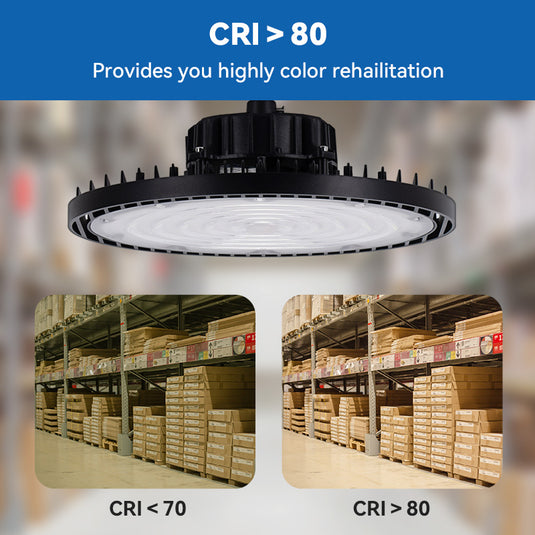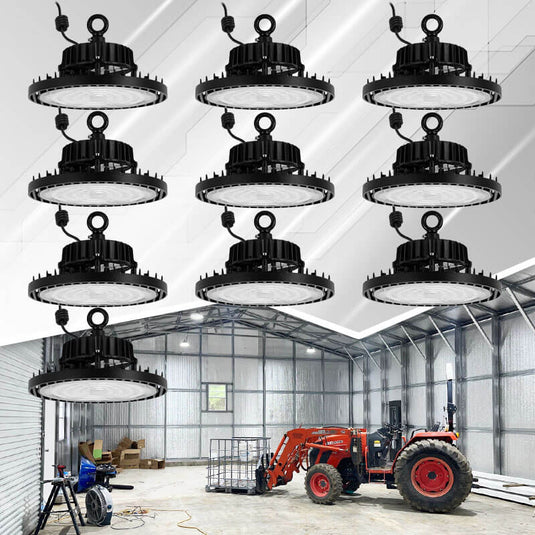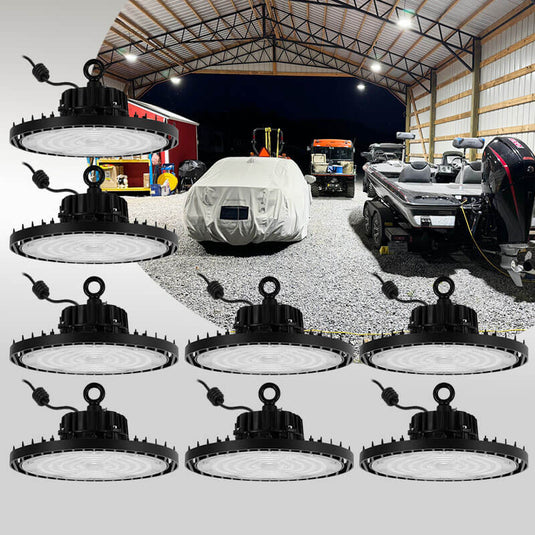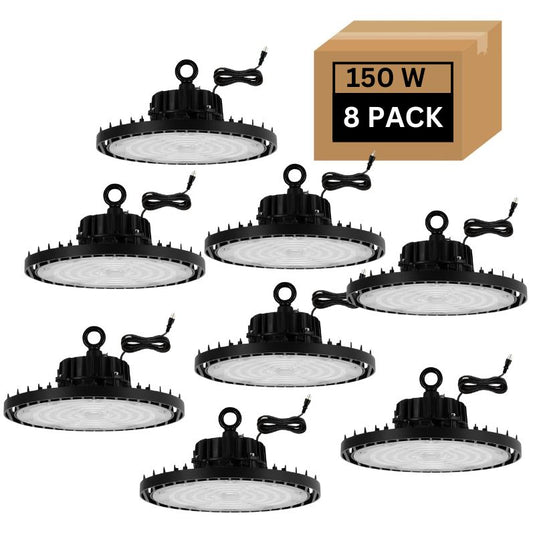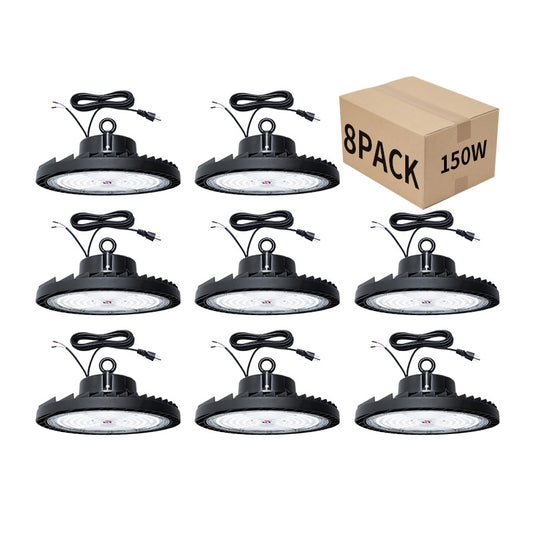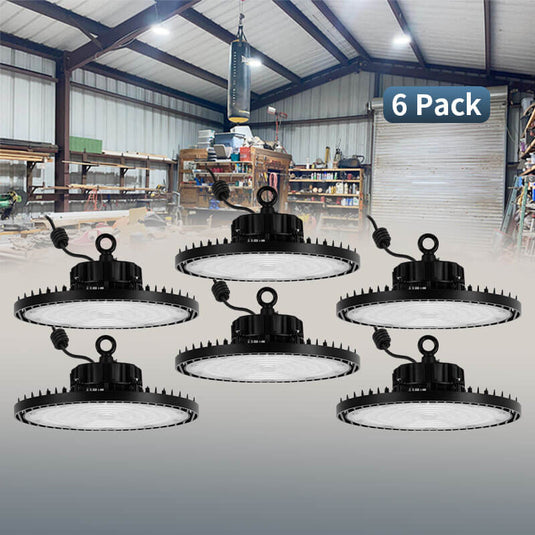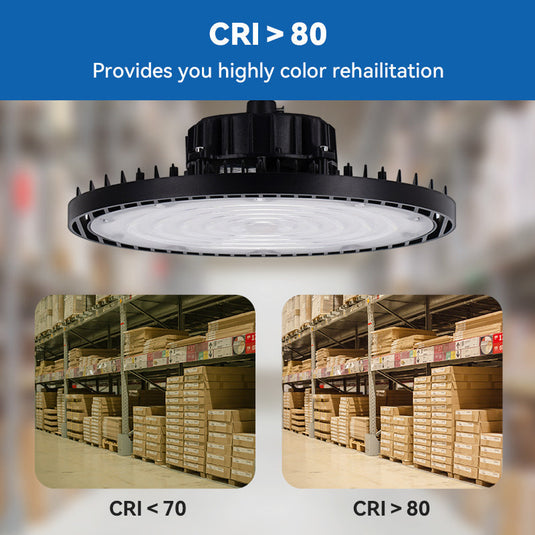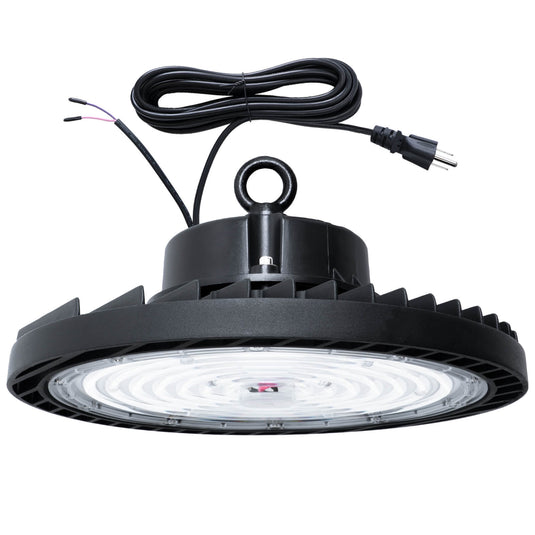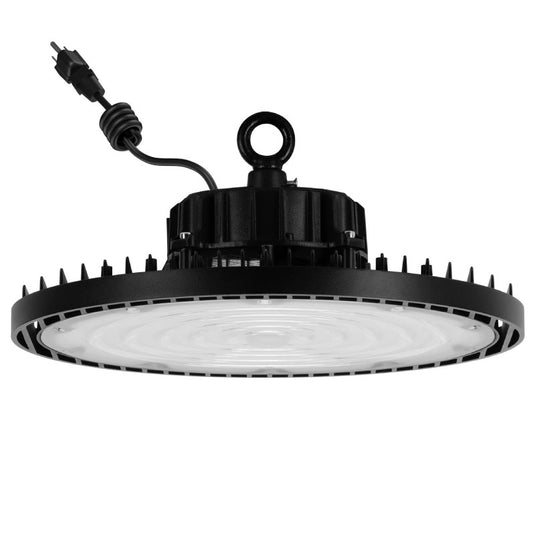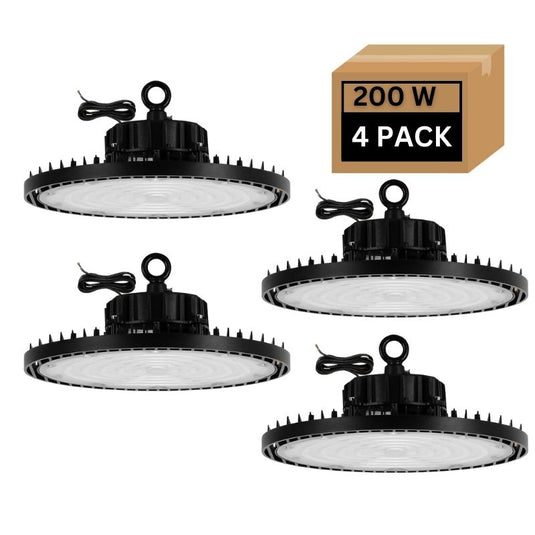Best UFO High Bay Lights - Superior Quality and Brightness
UFO High Bay Lights blogs
Basic knowledge
Advantages and Features
- A Brighter Future: How UFO High Bays Improve Workplace Safety and Productivity
- Durability and Longevity: What Makes UFO High Bays So Tough?
- The Cost-Saving Benefits of Using UFO High Bay Lights
- 5 Key Advantages of Upgrading to UFO High Bay LED Lighting
- Why UFO High Bay Lights Are the Go-To Choice for Warehouses
Buying Guide
- Understanding IP Ratings and Certifications for UFO High Bay Lights
- Top 5 Mistakes to Avoid When Purchasing UFO High Bay Lights
- Calculating the UFO High Bay Lights You Need for Your Space
- Wattage, Lumens, and CRI: What Specs Matter When Buying UFO High Bay Lights
- The Ultimate Buyer's Guide to Choosing the Right UFO High Bay Light
Solution
- The Ultimate Lighting Solution for Aircraft Hangars and Garages
- Solving Dark Spots: Designing a UFO High Bay Lighting Layout
- Upgrading Your Gym Lighting: A Guide to UFO High Bay Lights for Sports Facilities
- The Perfect Lighting for Your Factory Floor: A UFO High Bay Solution
- Warehouse Lighting Solutions: How UFO High Bays Transform Your Storage Space
Frequently Asked Questions
Here are 10 common questions about UFO High Bay Lights, with clear and concise answers.
1. What is a UFO high bay light, and how is it different from other lights?
A UFO high bay light is a powerful LED fixture with a distinctive circular, disc-like shape. It's designed for lighting large, open spaces with high ceilings (typically 12feet or more). Unlike older, bulkier lights, its compact design and efficient LEDs provide a massive amount of light from a single, durable fixture.
2. How do I know what wattage I need?
Don't focus on wattage. Instead, focus on lumens, which is the true measure of a light's brightness. A modern 150-watt LED high bay can produce the same or more light than a 400-watt metal halide. As a general guide, you'll need around 15,000 to 20,000 lumens for a 14-foot ceiling and 25,000+ lumens for a 16-foot ceiling.
3. What is the average lifespan of these lights?
UFO high bay lights have an incredibly long lifespan. Most are rated for 50,000 to 100,000 operating hours. For a business running lights for 12 hours a day, this translates to 10 to 20 years of maintenance-free performance.
4. Are they durable enough for a warehouse or factory?
Yes. UFO high bays are engineered to be highly durable. They are solid-state devices with no fragile filaments or glass. Their robust aluminum housing and sealed design (look for an IP65 rating) protect them from dust, moisture, and vibrations, which are common in industrial settings.
5. How much can I save on my electricity bill?
The savings can be significant. LED high bays are up to 75% more energy-efficient than traditional lighting. For a large facility, this can add up to thousands of dollars in annual energy savings. You'll also save on maintenance costs by virtually eliminating the need for frequent bulb changes.
6. Do they have a warm-up period like older lights?
No. A major advantage of LED high bays is their instant-on capability. They provide full brightness the moment you flip the switch, unlike traditional HID lights that can take 15 to 20 minutes to warm up.
7. Can I use them with a dimmer switch?
Yes, most high-quality UFO high bays come with 0-10V dimming capabilities. This allows you to precisely control the light level, which is useful for different tasks and helps save even more energy.
8. What's the best color temperature (Kelvin) for a workspace?
For most industrial and commercial applications like warehouses and factories, 5000K-6000K color temperature are the optimal choices. This neutral white light closely mimics daylight, improving visual clarity and helping to keep workers alert.
9. Are there rebates available for these lights?
Yes, many utility companies and government programs offer significant rebates for businesses that upgrade to energy-efficient LED lighting. To be eligible, the fixture must typically be DLC (DesignLights Consortium) certified.
10. How many do I need for my space?
The number of fixtures you need depends on the size of your space and the ceiling height. The best way to calculate this is to perform a simple light plan based on the area's square footage and the desired brightness (foot-candles). A general rule of thumb is to space the lights at a distance equal to their mounting height.


